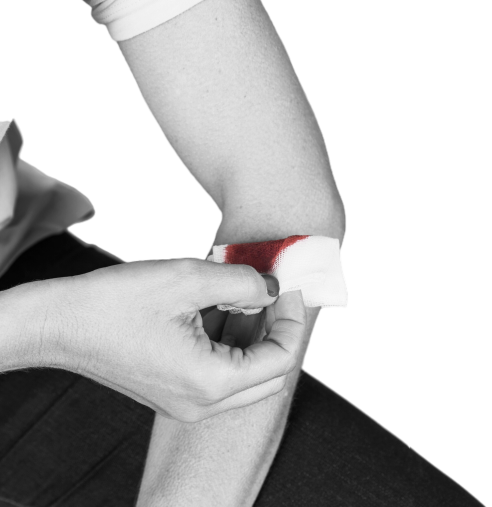Role of dry and wet dressings in chronic wounds:
Wound care is carefully cleansing, disinfecting, and treating wounds in order to facilitate healing and avoid infection for the best possible recovery.
Role of dry and wet dressings in chronic wounds:
In chronic wounds, such as pressure ulcers, diabetic foot ulcers, and venous leg ulcers, the roles of dry and wet dressings remain significant but may vary based on the specific characteristics of the wound and the stage of wound healing. Here’s how dry and wet dressings are utilized in the management of chronic wounds:
- Experienced
- Focused
- High-End Facility
- Pain Regenerative Therapies
- Supportive Team
- Emergency Care
- Special Diagnosis
- Swelling Regenerative Therapies


- Dry dressings are commonly used for chronic wounds with minimal to moderate exudate or during the later stages of healing.
- They provide a protective barrier against external contaminants and mechanical trauma, helping to prevent further tissue damage.
- Dry dressings can absorb minimal exudate and maintain a moist environment around the wound bed, which is essential for facilitating epithelialization and promoting wound closure.
- Examples of dry dressings include non-adherent dressings, foam dressings with a low-adherent contact layer, and silicone-based dressings.
- Wet dressings are often employed for chronic wounds with moderate to heavy exudate, necrotic tissue, or biofilm formation.
- They help create a moist wound environment conducive to cellular migration, angiogenesis, and tissue regeneration, thereby promoting wound healing.
- Wet dressings facilitate autolytic debridement by softening and liquefying necrotic tissue, aiding in its removal and promoting the formation of granulation tissue.
- They provide a cooling and soothing effect, which can alleviate pain and discomfort associated with chronic wounds, especially those with inflammatory or infectious components.
- Examples of wet dressings include saline-soaked gauze, hydrogel dressings, hydrocolloid dressings, and alginate dressings.
Note: The choice between dry and wet dressings in chronic wound management depends on various factors, including the amount of exudate, the presence of necrotic tissue or biofilm, the stage of wound healing, and the patient’s overall condition and preferences. Clinicians must assess the wound carefully and select the most appropriate dressing type to optimize wound healing outcomes. Additionally, regular reassessment of the wound and adjustment of the dressing regimen may be necessary to address changes in wound status and promote effective wound management.
